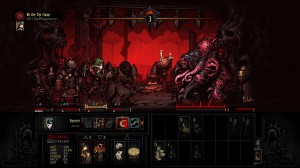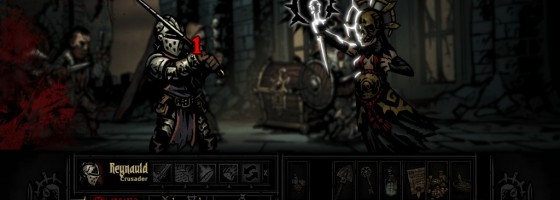An important part about playing a video game is letting the player figure things out and learning how the game design works. There is always a constant struggle between showing too much or too little information for the player; even more so in strategy or RPG games built around player choice. For today’s post, we’re going to look at when developers hide their information a little too much and when it’s important to just reveal it to the world.
Hide and Seek Design:
Game design is all about creating systems of rules and mechanics that will test the player’s understanding of the game. Some of the best games ever made were those with hidden depth to them; allowing players to dig into the mechanics to find greatness. In fact, many of my favorite games have that depth to them: XCOM, The World Ends with You, Renowned Explorers and so on.
With that said, figuring out how much of the game’s mechanics and underlining rules to reveal to the player is always difficult. If you reveal everything or too much, then the player will always know the best option every time and the game basically plays itself. If you reveal too little, then the player is forced to make decisions without having the proper knowledge; making it impossible to figure out if their choices had an impact and increasing the learning curve.
Action or skill-based games don’t have this problem as much, because the player can see how the game reacts to their choices through the character itself. We don’t need to know Mario’s exact jumping height and running speed when we can see it in action and remember it. But in abstracted design where there are rules and systems on the back-end, many developers hide or simply don’t tell the player how the game works.

Action or skill-based titles can get away with abstraction, as it’s a 1:1 ratio between player choice and in-game result
JRPGs are a very annoying example of this trend. I can’t count the number of JRPGs I’ve played where the game gives you all kinds of stats and numbers, but don’t give the player any idea of what they mean.
In some cases, simply having the abstracted number is enough: If I went from 10 attack to 20 attack, then naturally that means I’m doing more damage. But when you have mechanics or decisions that require an understanding of the game hidden, then the player is left to seek information elsewhere as to how the game is supposed to work.
I’ve talked about this a very long time ago when games are built around a strategy guide, or the developer hides information with the explicit purpose to sell the guides so that players know what’s going on.
Another point is if you have information that requires the player to do mental calculations on their own in order to parse out what the game is telling you. Darkest Dungeon has this issue in my opinion with how the game calculates resistant checks. That example is also a good springboard into talking about when to reveal the man behind the curtain to the player.
Decision Making vs. Decision Deciding:
In my opinion, if information is going to help the player make a choice, but not play the game for them, then it should be revealed to the player. With the Darkest Dungeon example, if the game tells me exactly what the to-proc chance is on blight or bleed skills, that’s going to give me information that’s going to help me make a decision. It would be a different story if the game simply just highlights the enemy they should target each time, because then the decision making is removed from the player.
One example from Skyshine’s Bedlam was something that I actually suggested to the developers. The point was showing the enemy’s attack range as you’re viewing their movement. This information doesn’t tell me how to play the game, but infers on my decision of where to move my characters during a turn. The same thought process can be seen in XCOM 1 and 2 and how the developers show the player what impacts the to-hit chance on the enemy.

Darkest Dungeon shows a lot of abstracted values and is almost a perfect example of transparent game design
Another point is if you have information hidden that is the same every time and the player needs to remember it when they play. Here’s a good example: In Prison Architect, there is an exact ratio of cookers to fridges to chefs in relation to serving tables in order to properly manage your kitchens.
This is the same every time you play and is common knowledge by the expert players and the Prison Architect Wiki. There is no reason why that information should be hidden if it’s the same thing every time; it’s not a choice when we’re talking about common knowledge built around optimization.
As a counter example, with later updates, Blizzard went in the right direction and now simply tells the player now about how many workers should be mining gas and crystals.
You don’t want to reveal information that’s going to reduce the number of choices or remove player thinking from the game. There is a big difference between telling the player: “If you do X, then Y will happen,” vs. “You should do X, because Y is the best option.”
If you don’t want to reveal the exact details of the mechanics and systems, you can use abstracted numbers to help illustrate what’s going on; which is what I talked about in my post on Abstraction in Game Design. Instead of showing the player an entire mathematic formula to determine damage, you can simply show the abstracted figures and the result of the calculation; which is what Darkest Dungeon does.
Again, the player is kept away from the low level numbers and formulas, but is still given the information they need to understand what’s going on and to make an informed decision.
Balancing Details:
A great game designer is able to present everything that the player needs at their fingertips; no hunting for information, not overwhelming them with trivial details and building an effective UI that does it all. This is where play testing can also come in handy for knowing what information to reveal to the player.

The player should be given enough information to make a decision, not have the game tell them what to do
If you’re seeing constant messages on your forums regarding people asking about a specific mechanic or rule that your experts are answering, then that would be a good candidate for simply revealing in game.
The less someone has to look outside your game for answers on how to play it, the better the game’s design and UI are.
I’ve said it before and I’ll say again, there is no game that should require hours of let’s plays and tutorials in order to figure out the basics, regardless of the complexity or genre. In an upcoming post, I’ll be returning to the use of abstraction and how designers can use certain techniques to make their games easier to learn.


